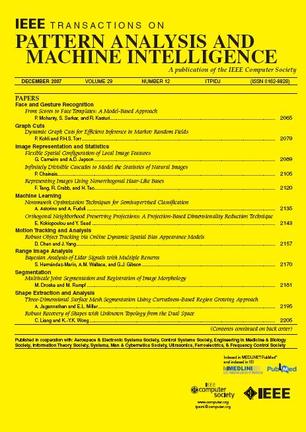StructNeRF: Neural Radiance Fields for Indoor Scenes with Structural Hints
IF 20.8
1区 计算机科学
Q1 COMPUTER SCIENCE, ARTIFICIAL INTELLIGENCE
IEEE Transactions on Pattern Analysis and Machine Intelligence
Pub Date : 2022-09-12
DOI:10.48550/arXiv.2209.05277
引用次数: 8
Abstract
Neural Radiance Fields (NeRF) achieve photo-realistic view synthesis with densely captured input images. However, the geometry of NeRF is extremely under-constrained given sparse views, resulting in significant degradation of novel view synthesis quality. Inspired by self-supervised depth estimation methods, we propose StructNeRF, a solution to novel view synthesis for indoor scenes with sparse inputs. StructNeRF leverages the structural hints naturally embedded in multi-view inputs to handle the unconstrained geometry issue in NeRF. Specifically, it tackles the texture and non-texture regions respectively: a patch-based multi-view consistent photometric loss is proposed to constrain the geometry of textured regions; for non-textured ones, we explicitly restrict them to be 3D consistent planes. Through the dense self-supervised depth constraints, our method improves both the geometry and the view synthesis performance of NeRF without any additional training on external data. Extensive experiments on several real-world datasets demonstrate that StructNeRF shows superior or comparable performance compared to state-of-the-art methods (e.g. NeRF, DSNeRF, RegNeRF, Dense Depth Priors, MonoSDF, etc.) for indoor scenes with sparse inputs both quantitatively and qualitatively.StructNeRF:带有结构提示的室内场景的神经辐射场
神经辐射场(NeRF)利用密集捕捉的输入图像实现照片逼真的视图合成。然而,在给定稀疏视图的情况下,NeRF的几何结构极受约束,导致新视图合成质量显著下降。受自监督深度估计方法的启发,我们提出了StructNeRF,这是一种用于具有稀疏输入的室内场景的新型视图合成解决方案。StructNeRF利用多视图输入中自然嵌入的结构提示来处理NeRF中的无约束几何问题。具体来说,它分别处理了纹理和非纹理区域:提出了一种基于补丁的多视图一致光度损失来约束纹理区域的几何;对于非纹理平面,我们明确地将它们限制为三维一致平面。通过密集的自监督深度约束,我们的方法在没有对外部数据进行任何额外训练的情况下提高了NeRF的几何和视图合成性能。在几个真实世界数据集上进行的大量实验表明,与最先进的方法(例如NeRF、DSNeRF、RegNeRF、Dense Depth Priors、MonoSDF等)相比,对于具有稀疏输入的室内场景,StructNeRF在数量和质量上都表现出优越或可比的性能。
本文章由计算机程序翻译,如有差异,请以英文原文为准。
求助全文
约1分钟内获得全文
求助全文
来源期刊
CiteScore
28.40
自引率
3.00%
发文量
885
审稿时长
8.5 months
期刊介绍:
The IEEE Transactions on Pattern Analysis and Machine Intelligence publishes articles on all traditional areas of computer vision and image understanding, all traditional areas of pattern analysis and recognition, and selected areas of machine intelligence, with a particular emphasis on machine learning for pattern analysis. Areas such as techniques for visual search, document and handwriting analysis, medical image analysis, video and image sequence analysis, content-based retrieval of image and video, face and gesture recognition and relevant specialized hardware and/or software architectures are also covered.

 求助内容:
求助内容: 应助结果提醒方式:
应助结果提醒方式:


